Last Revised: February 16, 2018
On December 16, 1998, milk samples were running in a Beckman L2-65B ultracentrifuge using a large aluminum rotor (a rotor is a large metal object that holds the individual sample tubes and is connected to the spin drive of the centrifuge). The rotor had been used for this procedure many times before. Approximately one hour into the operation, the rotor failed due to excessive mechanical stress caused by the "G" forces of the high rotation speed. The subsequent explosion completely destroyed the centrifuge (Images 1 & 2). The safety shielding in the unit did not contain all the metal fragments. The half-inch thick sliding steel door on top of the unit buckled allowing fragments, including the steel rotor top, to escape (Image 3). Fragments ruined a nearby refrigerator and an ultra-cold freezer in addition to making holes in the walls and ceiling. The unit itself was propelled sideways and damaged cabinets and shelving that contained over a hundred containers of chemicals (Image 4). Fortunately, sliding cabinet doors prevented the containers from falling to the floor and breaking. A shock wave from the accident shattered all four windows in the room. The shock wave also destroyed the control system for an incubator and shook an interior wall causing shelving on the wall to collapse (Image 5). Fortunately the room was not occupied at the time and there were no injuries to personnel.
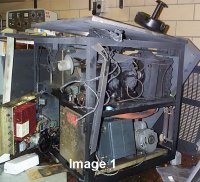
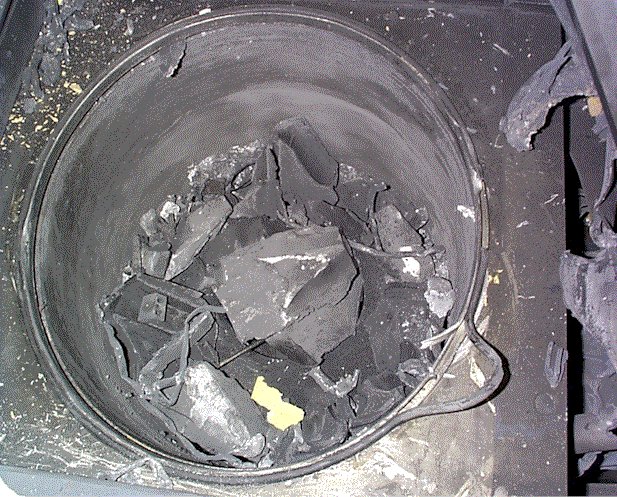
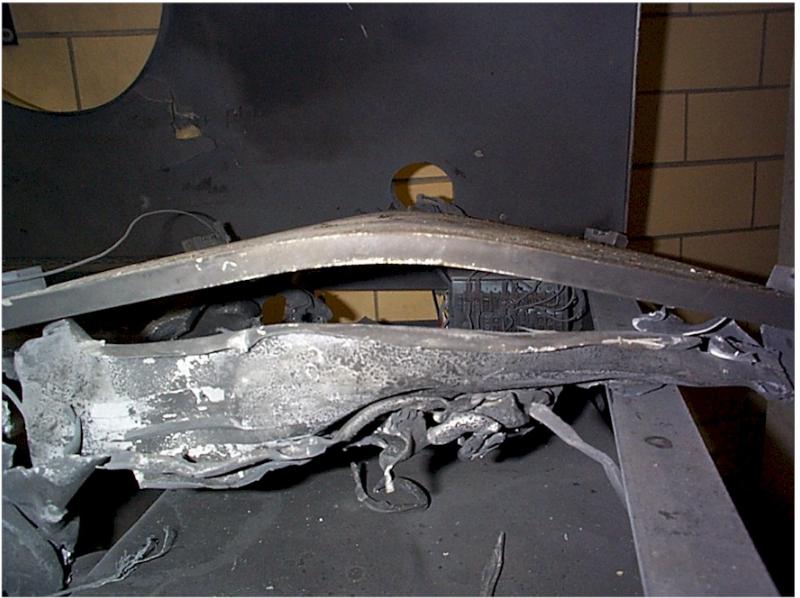
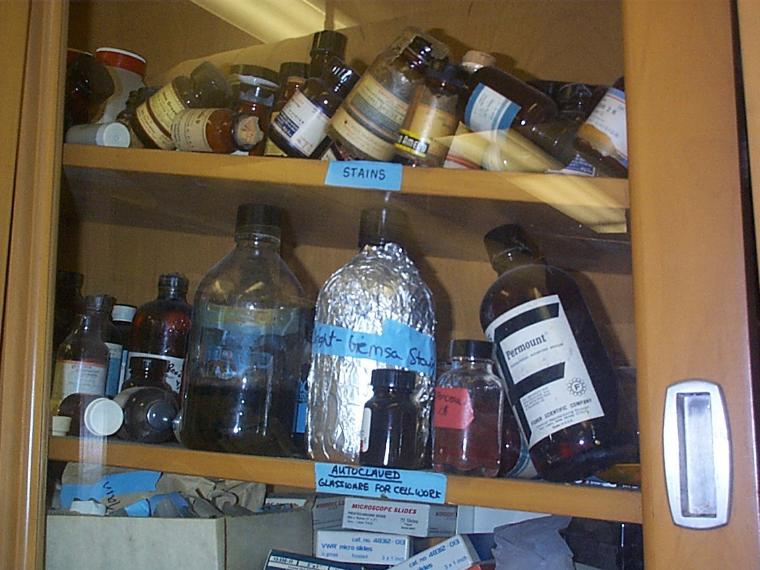
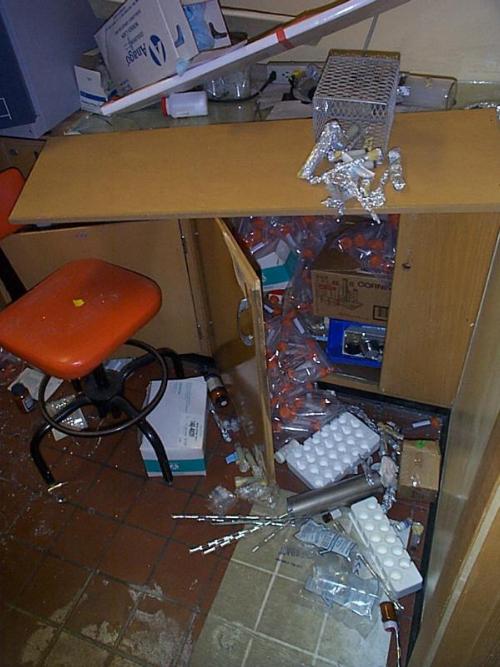
Preventing Centrifuge Accidents
Rotors on high-speed centrifuge and ultracentrifuge units are subjects to powerful mechanical stress that can result in rotor failure. In addition, improper loading and balancing of rotors can cause the rotors to break loose while spinning. Everyone using this type of equipment needs to know the proper operating procedures for the specific unit being operated, including how to select, load, balance and clean the rotor. These procedures are explained in the unit's operating manual. It is essential that you have the owner's manual for your unit and that you follow the manufacturer's instructions carefully. Some general considerations are covered in the "Beckman Coulter Rotor Safety Guide" available for download in Adobe Acrobat PDF format.
It is also necessary to "de-rate" some rotors (limiting the maximum speed at which the rotor is used to some level below the maximum speed listed for the rotor when new) based on the amount of use the rotor has received. This requires that operators maintain a comprehensive use log for each rotor. These procedures are explained in the operating manual.
Laboratory supervisors must see to it that operators of this type of equipment are properly trained in the selection, care and use of rotors. In the event a trained and experienced operator is not available to train new operators, you may contact the service representative for the unit and arrange an orientation program. Check the list below for details. You may also contact EHRS.
|
Beckman |
Call: 1-800-854-8067 prompt 1 |
|
Sorvall |
Call: 1-800-522-7746 prompt 3 ext. 3500 or 3908 |
|
IEC |
Call: 1-800-843-1113 ext. 2002 |
If you need additional information or assistance, contact EHRS. Please let us know of any problems you uncover, and of solutions you plan to implement.
In the event of operating problems with high-speed centrifuge or ultracentrifuge units, or signs of wear or damage to rotors, the equipment should be taken out of service immediately and clearly marked "Warning -DO NOT USE" until checked by an authorized service representative. Check the attached contact list.
Special Hazard Warning for Older Equipment
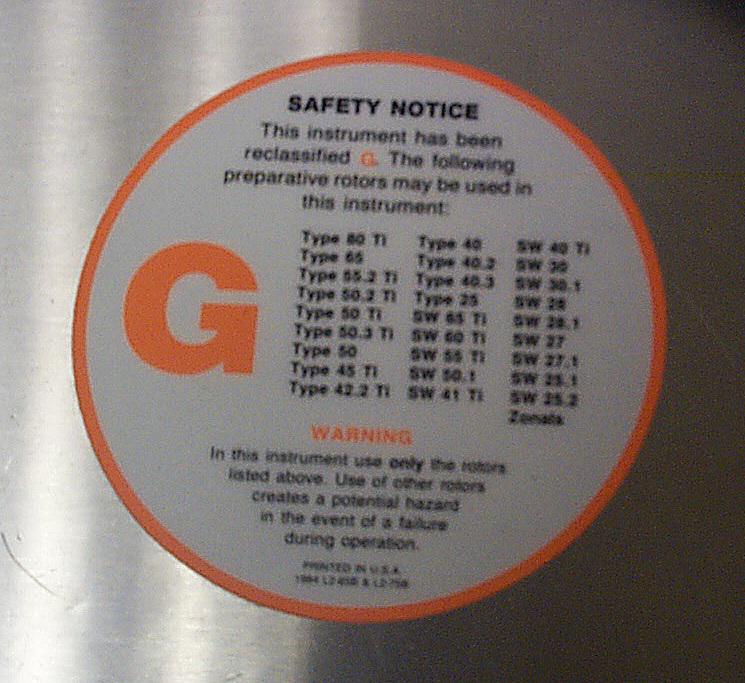
Older equipment does not have all the safety features built into new units. They are more likely to experience rotor failures and they are more likely to cause injuries when they fail. It is critical that all safety and maintenance procedures specified by the manufacturer are followed. Based on the investigation of the December 16, 1998 accident, Cornell learned that Beckman L2 and L3 series ultracentrifuges have special operating procedures and restrictions to reduce the risk of damage and injuries. This includes an orange decal on the sliding door that specifies the rotor models that are safe to use in a particular unit (Image 6).
EHRS would like to know of any Beckman L2 or L3 ultracentrifuges at University of Pennsylvania. If you have an operable unit if this type please contact EHRS at 215-898-4453
If you have this type of unit and prefer to take it permanently out of service, please disconnect the unit from the electric outlet then cut the power cord from the unit.